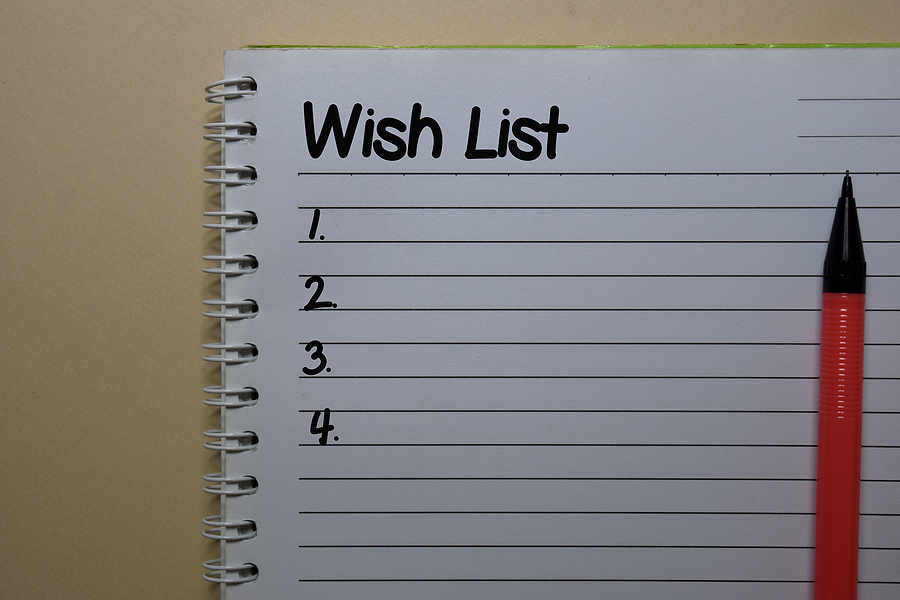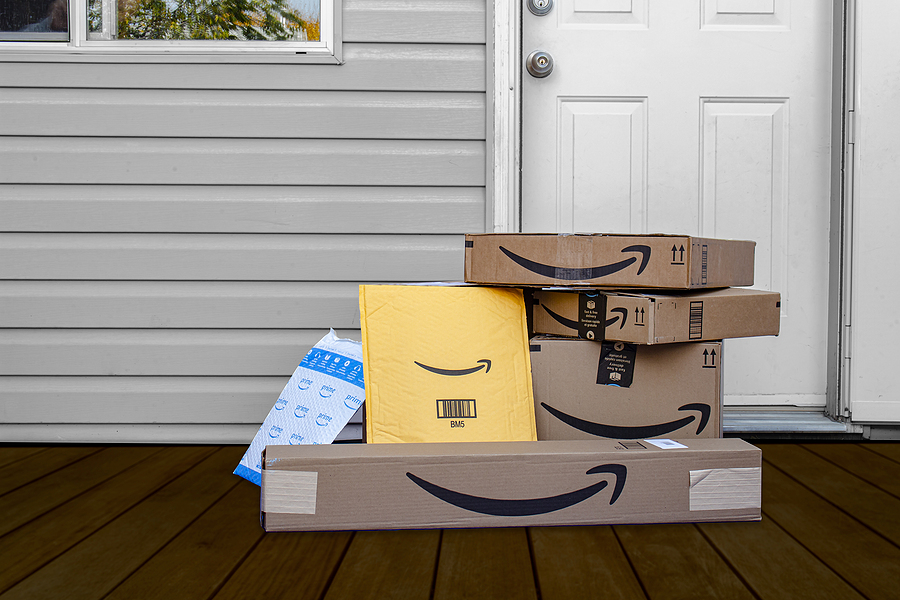Every year at this time it can be strange to reflect on all that has happened over the past 12 months. I suspect that we all have a bit of selective memory and often forget to count our blessings. Instead, we target the difficult times. Why is that? I’ll do my best to recite a bit of both in this review of the past year.
The Industry
We spent the first quarter of 2021 waiting for things to “open up” after enduring months of a pandemic shutdown. Meanwhile, book sales continued to percolate. What everyone is watching carefully are the new buying habits of consumers. An even larger percentage of sales has shifted online, for obvious reasons. This becomes a challenge for marketing and reaching the consumer with new or unfamiliar books.
Supply-chain issues ravaged the opportunity for even greater sales in 2021. We had a number of books delayed to a later release because of the difficulty in getting books printed overseas. But even books printed in the U.S. were delayed. In one case a client’s book sold out its entire print run before the publication date. But the publisher could not replenish the warehouse until three days before Christmas. Another had a Christmas-themed book sell out in October and had to cancel all promotional activities planned for November because there weren’t any books to buy.
I talked with multiple publishers about this situation throughout the latter part of the year, and the problems were industry wide. For one printer, the normal time to bring a book off the press was 4-6 weeks in 2019. Today that same printer needs 14 weeks to get books off the press. The entire industry will be dealing with this issue throughout 2022 and maybe beyond. Scarcity in paper, shipping logjams, lack of trucking, sick or quarantined workers all create a storm of challenges for printing books.
Authors who derive a significant part of their livelihood from speaking engagements found some relief. We can only hope for those opportunities to grow despite the recent issues with Covid variants.
The Department of Justice filed to stop the merger of Simon & Schuster with Penguin Random House. With that hearing scheduled for late Summer 2022, we won’t know what will happen until you read this update a year from now!
There was the continued shifting and changes in editorial and marketing departments. I seem to write about them every year. But they affect our work in pitching new editors. Without having frequent opportunities to meet in person, we are meeting more of them virtually. I’m grateful that technology has provided for these opportunities.
Our Agency
The agency continues to have the privilege of working with nearly 300 authors. Our efforts secured contracts for over 200 new books, a half dozen of them from first-time authors. We secured many audio, large-print, film-option, and foreign-rights licensing deals. We also had two books hit the top five on the ECPA bestseller charts in nonfiction and another client with multiple titles in the top 20 all year in the children’s bestseller list.
Tamela, Bob, and Dan are great agents who pour themselves into their clients’ work. I am honored to have them as part of our team. We all continue to find new opportunities, give guidance, and troubleshoot a wide variety of issues.
Both Tamela and Dan lost a parent in 2021 (Tamela’s mom and Dan’s dad.) And Bob had a client tragically killed. These losses cut close to the heart. We all continue to pray for grace and peace.
What was most encouraging was our publishing partners continued acquisitions. Remember that publishing is a long process. Contracts signed this past year were not only for books releasing in 2022 but for those to be published as far out as 2026.
Some of our clients were honored by various awards:
- We had eight finalists for the Christy Award (Lynn Blackburn, Connilyn Cossette, Amanda Cox, Sharon Hinck, Michelle Schoklee, Kara Swanson, Amanda Wen, and Roseanna White). Amanda Cox won for best first novel. Roseanna White won for best historical novel. Sharon Hinck won for best speculative novel for the second year in a row.
- Amanda Cox was awarded the Christy Award Book of the Year!
- Three of our authors won the Carol Award: Connilyn Cossette for best historical romance, Nancy Mehl for best mystery/suspense/thriller, and Lisa Carter for best short novel.
- Nancy Mehl won the Daphne du Maurier Award for Excellence in Mystery/Suspense
- Kara Swanson won the Realm Makers award for best fantasy. And, also, she won their Alliance Award, which is a reader’s-choice award.
- The ECPA Bronze Book Award for more than 100,000 copies sold was given to Dallas Jenkins, Amanda Jenkins, and Dr. Douglas Huffman (What Does It Mean to Be Chosen? published by David C. Cook).
The Christian Writers Institute and The Christian Writers Market Guide
The Christian Writers Institute continues to provide opportunities for writers to further their education via our online audio and video courses.
The new 2022 edition of The Christian Writers Market Guide is available right now in ebook and online. The paperback will be ready later this month. (Supply-chain issues caused a delay in publication.) There is nothing like it on the market—a curated listing of resources for the Christian writer. I am committed to releasing the new paperback/ebook edition each year and keeping the online version updated throughout the year.
A reminder that this Wednesday, January 12th (5pm EST), Thomas Umstattd Jr. and I will be doing a free Q&A session online. All who register will be sent a link for later viewing if you cannot make the actual event.
Register by Clicking Here.
Enclave Publishing
Enclave Publishing is a traditional publishing company devoted to the publication of speculative fiction written by authors who have a Christian worldview. I created the following description to describe the type of books we publish: “Enclave Publishing helps create out-of-this-world stories informed by a coherent theology.”
We released 12 new titles in 2021. Half of them were under our YA imprint, Enclave Escape. Look for a new hardcover release each month throughout 2022! These are all tremendous books that are gaining attention as you can see from the awards they collected.
Two of our titles won the Christy Award (Forsaken Island by Sharon Hinck and Mortal Sight by Sandra Fernandez Rhoads). This is the third year in a row Enclave has won a Christy! Mortal Sight also won a Carol Award. Kara Swanson’s Dust won the Realm Makers award for best fantasy novel. She also won the Alliance Reader’s Choice award. In addition, Kristen Young’s Apprentice won for best science fiction and also The Book of the Year!
But the biggest news of all was selling Enclave Publishing to Oasis Family Media at the end of the year. This move allows Enclave to grow with the support of an experienced organization. It is best known for the audio division, Oasis Audio. They happened to win the Realm Marker award for best audio for their recording of Story Raider by Lindsay Franklin.
Oasis will retain our entire editorial, production, and marketing team with me continuing as publisher. I am very grateful for the partnership and look forward to publishing to infinity and beyond.
The Future
2021 was a year of continued turmoil and uncertainty. We thought all would go back to “normal,” but various forces have conspired to destabilize what we consider “normal.” I wrote the below thoughts last year, and they still hold true:
Why should we be surprised? A world beset by sin and evil only reveals the need for a Savior. Principalities and Powers are those “various forces” that have “conspired to destabilize what we consider ‘normal.’”
Hebrews 12: 25-29 (CSB):
See to it that you do not reject the one who speaks. For if they did not escape when they rejected him who warned them on earth, even less will we if we turn away from him who warns us from heaven. His voice shook the earth at that time, but now he has promised, yet once more I will shake not only the earth but also the heavens. This expression, “Yet once more,” indicates the removal of what can be shaken—that is, created things—so that what is not shaken might remain.
Therefore, since we are receiving a kingdom that cannot be shaken, let us be thankful. By it, we may serve God acceptably, with reverence and awe, for our God is a consuming fire (emphasis mine).
The world needs your nonfiction insights to counter the ills of a society careening toward self-destruction. We need your great stories to fill the fiction market and offer an alternative to the dour stories being told by the world. Our culture staggers from crisis headline to crisis headline, but the Church and all believers must steadily pursue Christ. Books and studies are a key help in this pursuit.
Soli Deo Gloria











